Inhabad Gastauchgerät modell 1923
The Inhabad Gastaucher is a breathing apparatus designed by Professor Woltersdorf. Woltersdorf, a professor at the Breslau University of Applied Sciences (12-08-1875 – ?), was the ‘bergassessor’ of the Oberschlesischer headquarters of mining .

Inhabad, now primarily known as Draeger’s competitor in the field of resuscitation equipment, produced a ‘Wiederbelebungs apparatus’ under the name Inhabad Wiederbeleber in 1921. The device led to many years of discussion about its effectiveness. This discussion went far beyond the borders even as far as the United States.
If you want to read the full story about the Inhabad Rettungsapparat and the Dräger Pulmotor there is a great Thetis online written by Hans Christian Niggebrügge to become Doctor and can be found here: http://www.zhb.uni-luebeck.de/epubs/ediss1082.pdf
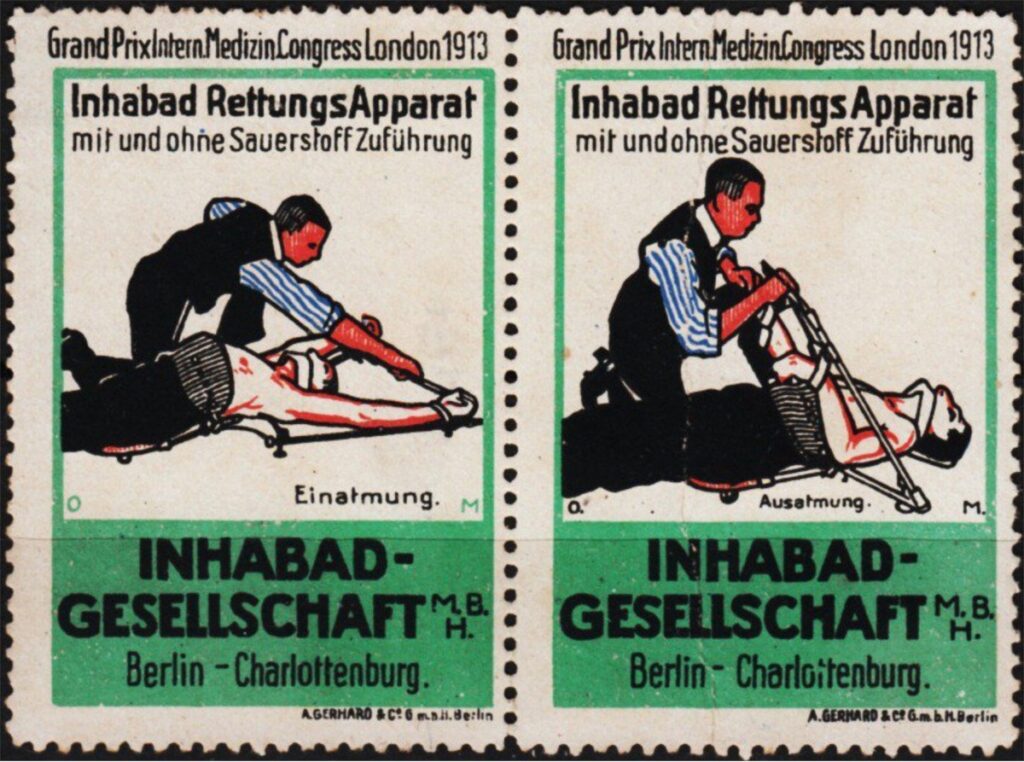
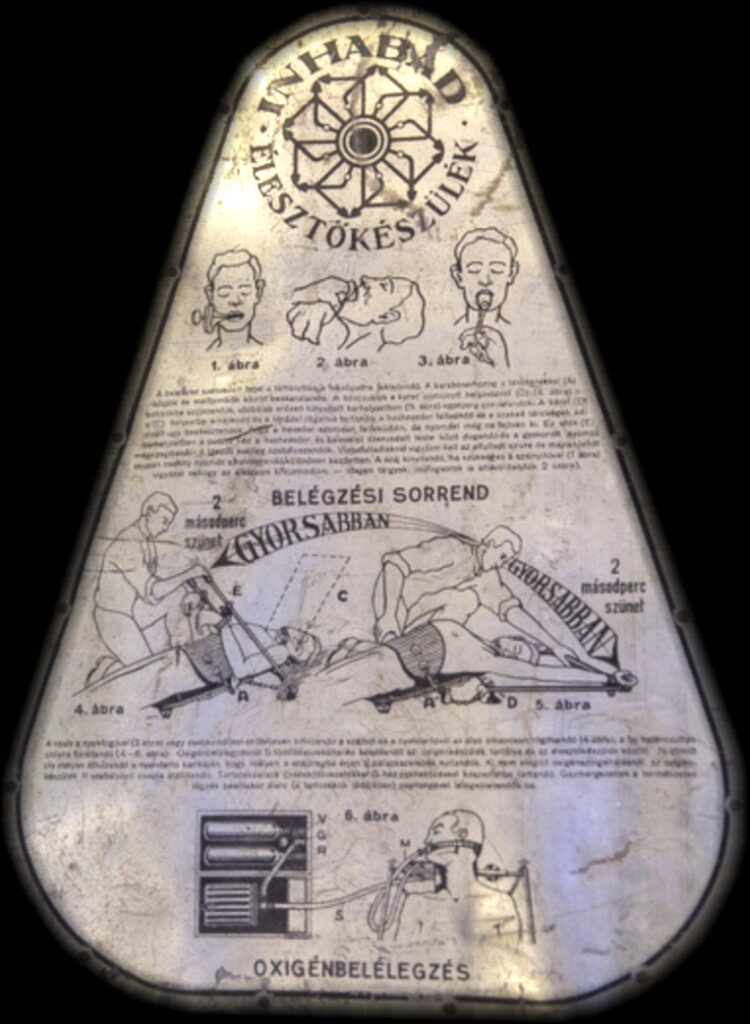
In addition to the Wiederbeleber, Inhabad also produced respiratory protection equipment in the years that followed.
To the best of my knowledge, three models were marketed by Inhabad.
- Inhabad Modell 1923
- Inhabad Modell 1924 nach Woltersdorf
- Inhabad Modell 1928
The 1924 model from Wolterdorf showed great similarities to the 1924 Draeger Modell and the 1924 Auer gerät.

The Inhabad modell 1923 is documented to a certain extent and a patent of this apparatus can be found under the German patent DE 436274.
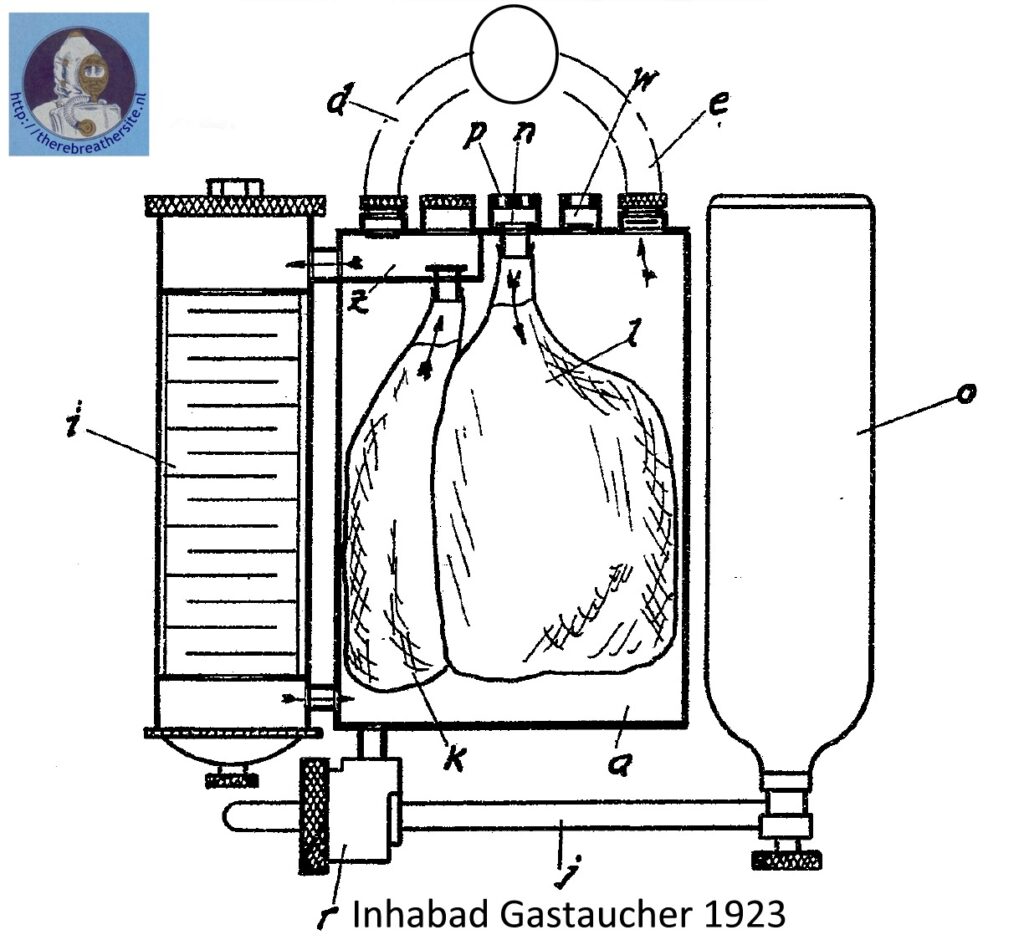
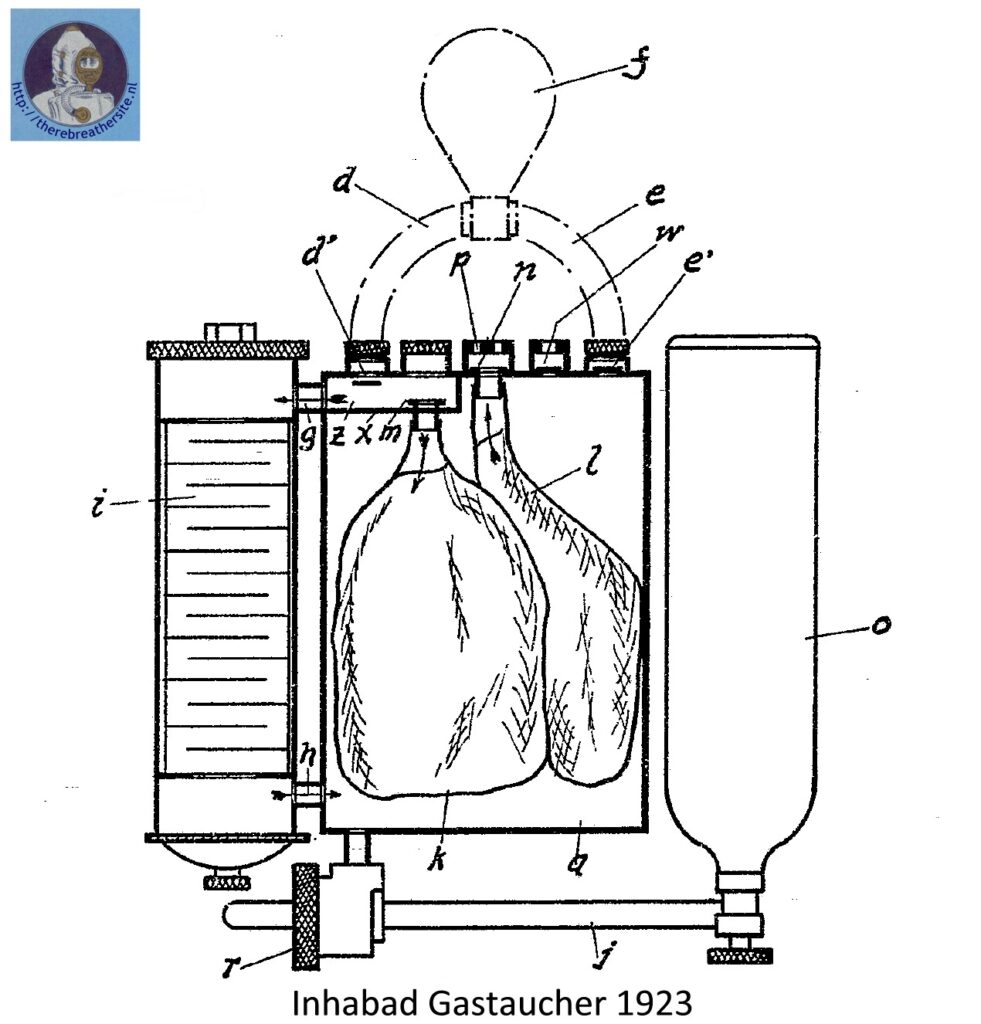
Inhabad GVBM was originally located in Berlin in the Charlottenburg district at Karlstrasse 19a.
Information on the 1924 and 1928 models is scarce. If you have additional information, I will be happy to include it in this database.
The Gastaucher model 1923 was a special device because it had a typical working mechanism. All manufacturers of breathing apparatus used a closed circuit in which the contralong or breathing bag served to collect the exhaled air. The Inhabad apparatus had a different mechanism, namely a rigid case divided into two separate chambers. In this rigid case, there were two natural rubber balloons that were connected to the outside air by valves. When breathing in, a slight negative pressure is created in the exhalation chamber, causing a rubber balloon to fill with ambient air through a valve. The volume of the balloon increased and the Co2-rich air in the exhalation chamber was pressed to the scrubber. The inhalation chamber worked in a similar way, mixing new oxygen into the loop. The breathing gas thus circulated in a rigid environment, but the balloons in the housing allowed normal breathing. Due to the larger number of valves than other breathing systems, there will be a higher breathing resistance.
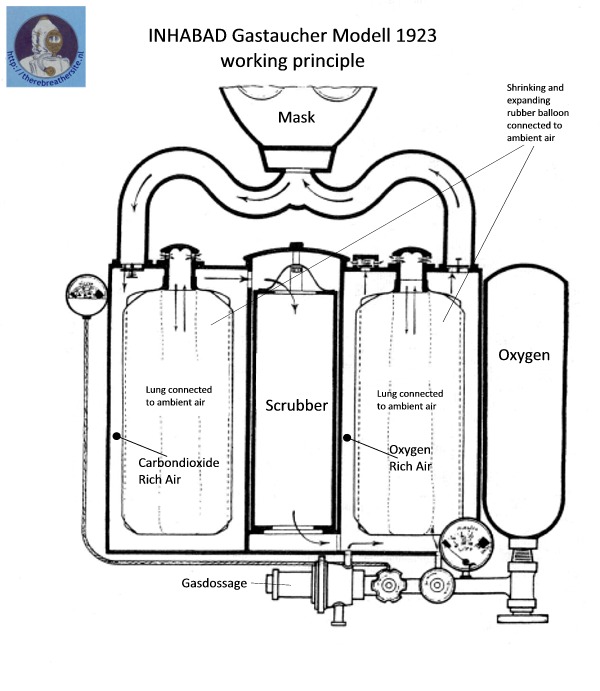
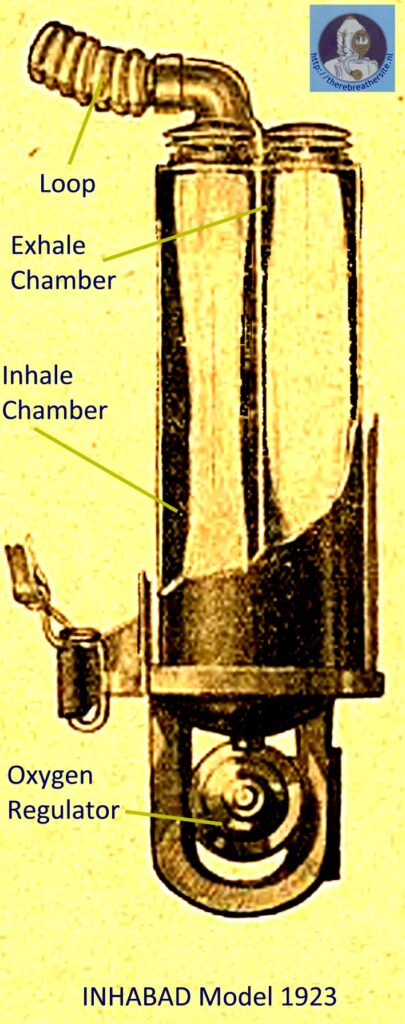
The unit, measuring HxWxD 500 x 450 x 140 mm, had a weight of 17.25 kg. The scrubber, measuring 290 x 100 mm, contained an interchangeable lime holder and formed one unit with the rigid housing. The lime holder contained 1200 grams of Co2 absorbent and had a surface area of 3400 cm2. The oxygen cylinder consisted of a 1.9 litre cylinder carrying 150 bar oxygen.
A pressure gauge that could be read by the user was provided.
The gas mechanism consisted of a regulator with a constant flow of 2.1 litres/minute and was equipped with a bypass valve so that extra oxygen could be injected in case of heavy work.
It was equipped with a mouth-nose mask which, according to Inhabad, would make breathing easier. The mask was available in three sizes so that the wearer could purchase a suitable model.
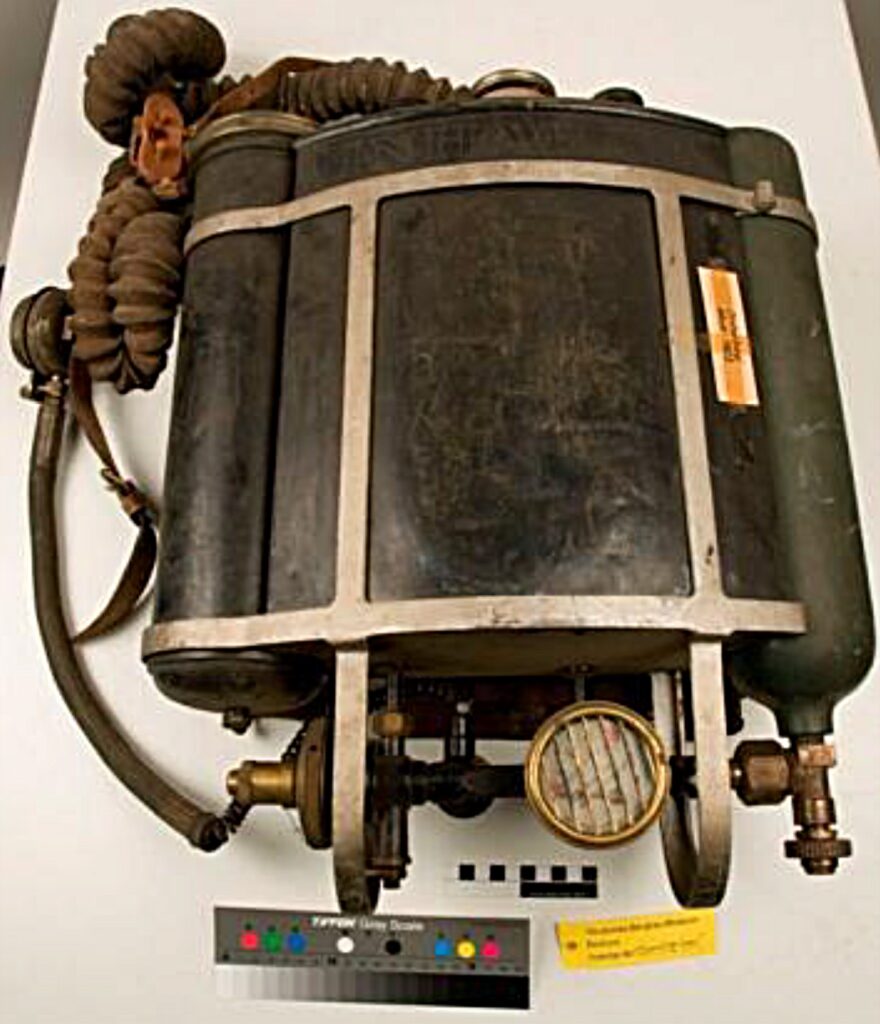
INHABAD Modell 1923
This is the actual unit used for restauration purposes by Deutsches Bergbau-Museum Bochum.
Picture courtesy Deutsches Bergbau-Museum Bochum
https://www.bergbaumuseum.de/
Further research:
The following information would enrich this article:
– The company history of Inhabad
– The biography of Prof. Woltersdorf
– Information on breathing apparatus models 1924 and 1928
– Numbers about production and when Inhabad stopped as a company.
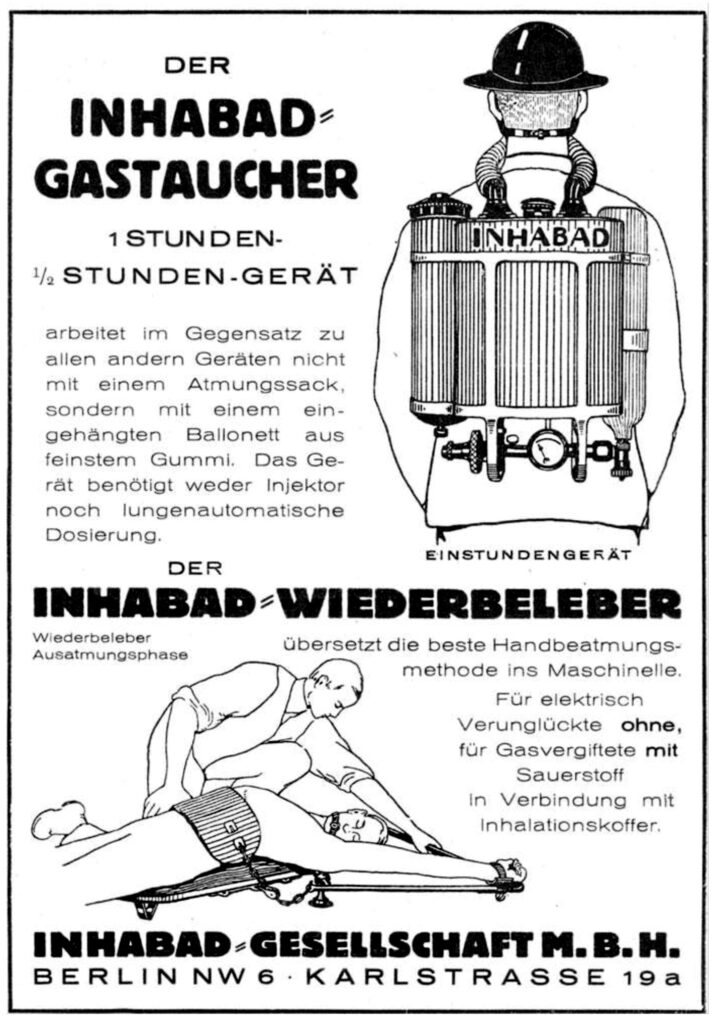
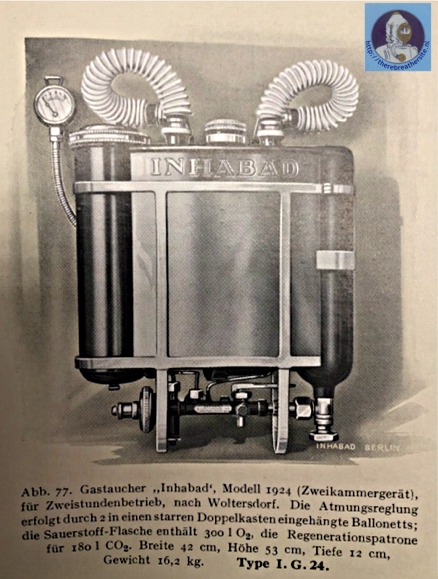
Around 1928, Inhabad put a complete series of apparatus on the market under the name Naszogen Geräte. On this page, you will find detailed information on the Naszogen devices, which did not achieve any commercial success.
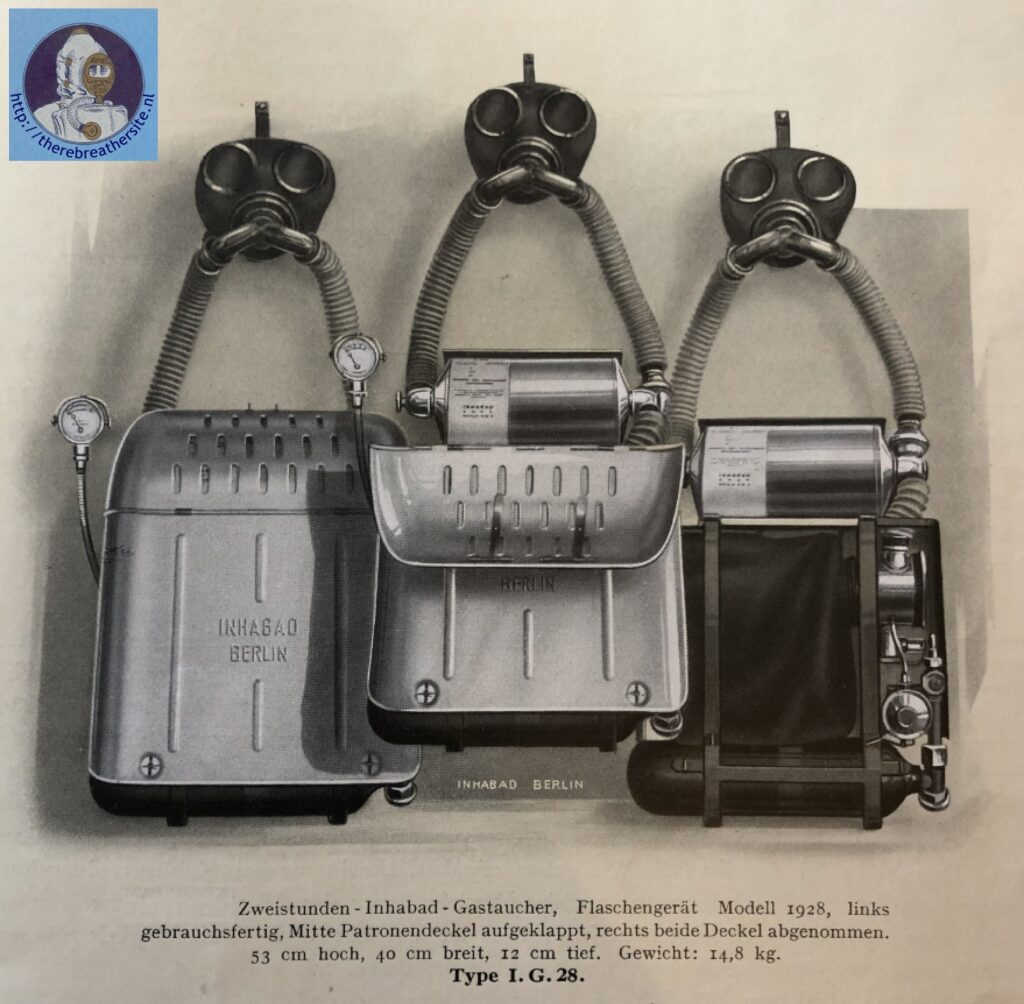
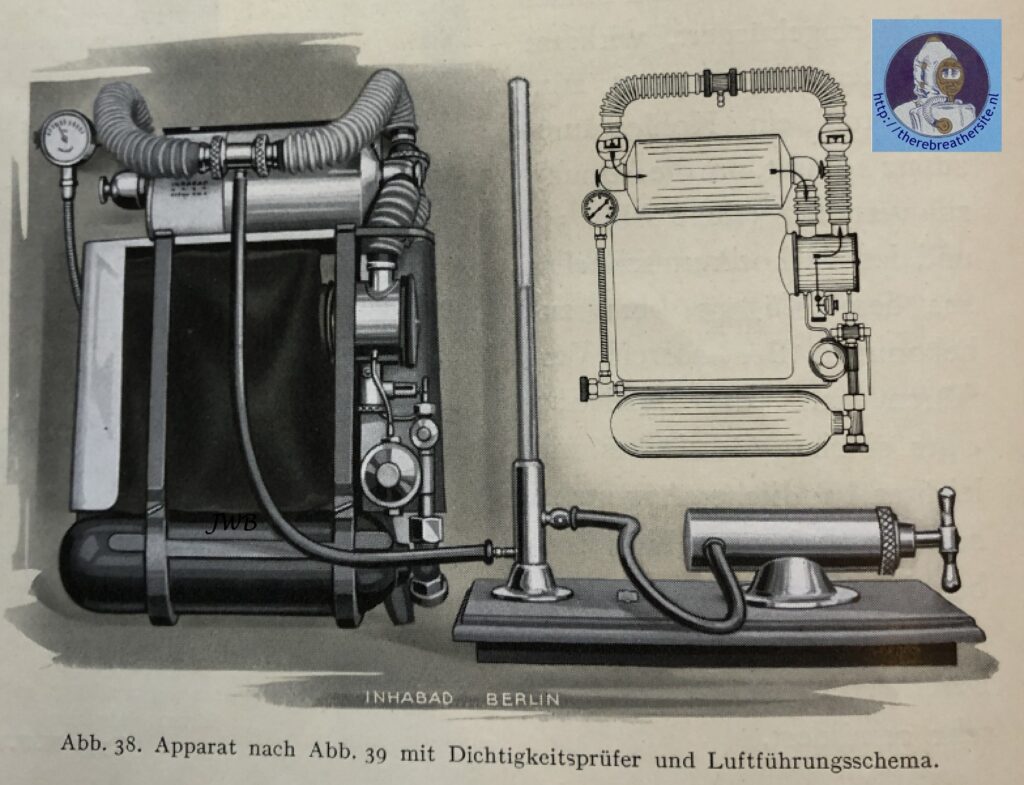
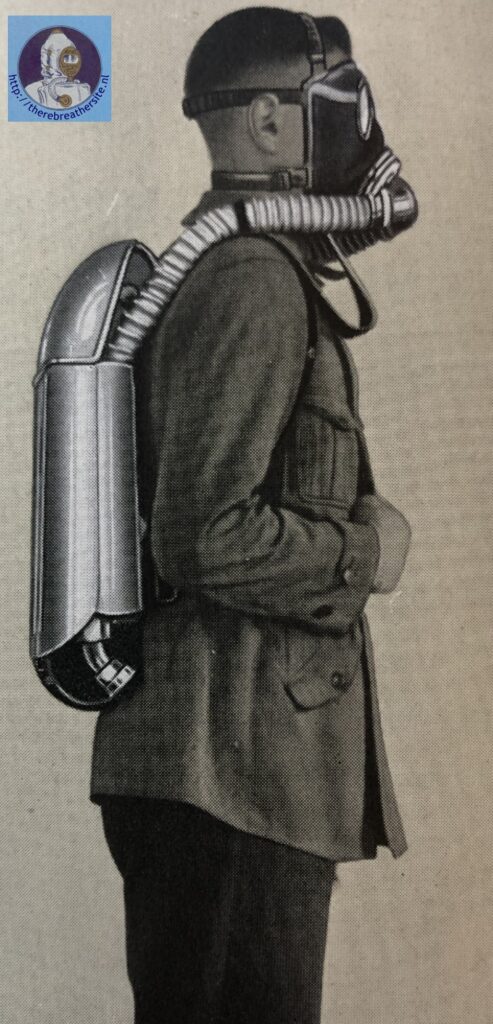

Therebreathersite was founded by Jan Willem Bech in 1999. After a diving career of many years, he decided to start technical diving in 1999. He immediately noticed that at that time there was almost no website that contained the history of closed breathing systems. The start for the website led to a huge collection that offered about 1,300 pages of information until 2019. In 2019, a fresh start was made with the website now freely available online for everyone. Therebreathersite is a source of information for divers, researchers, technicians and students. I hope you enjoy browsing the content!
